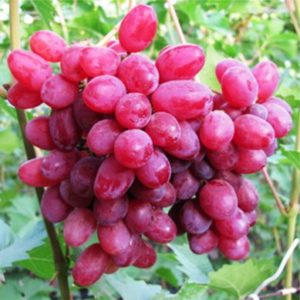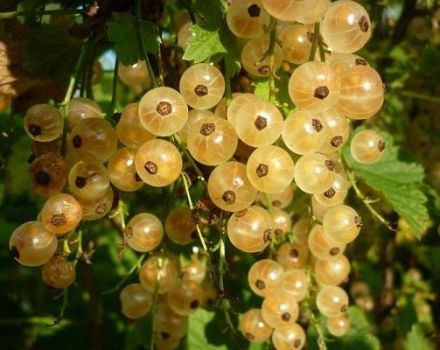Description and history of Victoria grapes, planting and care features
For the Middle Strip, with not very long summers and harsh winters, it is difficult to pick up grapes for planting. A sweet and large berry with a short ripening period is the Victoria grape. This bush is easily rooted or grafted, when sheltered it tolerates cold winters well and pleases with an abundant harvest, a pronounced taste. Differs in resistance to diseases and is almost not interesting to pests.
Origin story
This variety was bred in the 90s by Russian breeders. The main task was to obtain frost-resistant grapes for cultivation in the Mid-latitudes with short summers. The selection was carried out on the basis of three varieties: Vitis Vinifera, Vitis Amurenzis and Save Vilar 12-304.
The result was a plant that closely resembles the Japanese Uehara and originally had the same working name. Later the variety was named after the Empress Victoria.
Description of the variety
The bush feels great in the conditions of Siberia, the Middle Belt, withstands frost up to 27 ° C. In terms of size, it is medium-sized, with a powerful root system. The leaves are tender, soft, dark green in color.
The description of the grape variety indicates the female flowering type It is necessary to plant other pollinating varieties nearby.
Victoria grapes feel good with a load of 25-30 eyes with a distribution of 5-8 per shoot. Bears fruit for 2-3 years after rooting. The ripening time of the crop is 115-120 days. Brushes of medium density, weighing from 0.5 to 0.7 kilograms. The berry is oblong, large, with a thin skin, fleshy.
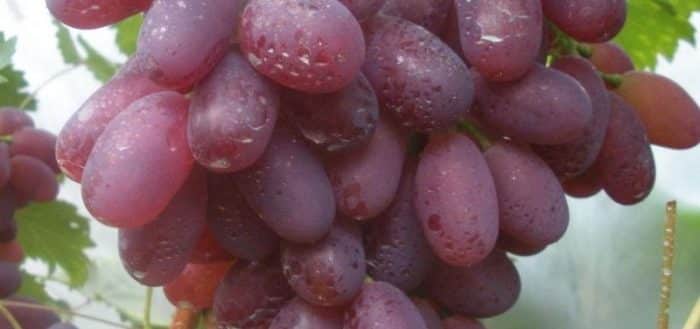
According to the color of the berries, several varieties are distinguished:
- Pink Victoria - purple-pink brushes ripening at the same time;
- White Victoria - yellow-green clusters, smaller;
- Romanian Victoria - berries are yellow, pink and green due to non-simultaneous ripening.
Landing features
A place with good illumination and a minimum of drafts is chosen for planting. The best time is autumn, since in spring the bush quickly wakes up and grows.
Soil selection
For the horse system, a pit is prepared with a diameter of about 0.8-1 meter. The bottom is filled with drainage, and then 10-centimeter layers of ordinary garden soil and humus are alternated. For the root system, a hole of the required dimensions is left. The land is well rammed and watered. After planting the grapes, the surface is mulched with sawdust or straw. The disembarkation is carried out with a step of 1.5-3.0 meters.

Sapling selection
Plant survival depends on the quality of the planting material. When choosing grapes, pay attention to:
- length - at least 20 centimeters;
- quality of wood - if you knock off the bark, it is green;
- the development of the root system, the absence of growths and thickenings on it;
- root color - white and moist when cut;
- the quality of the eyes - when pressed, they do not fall off and do not peel off.
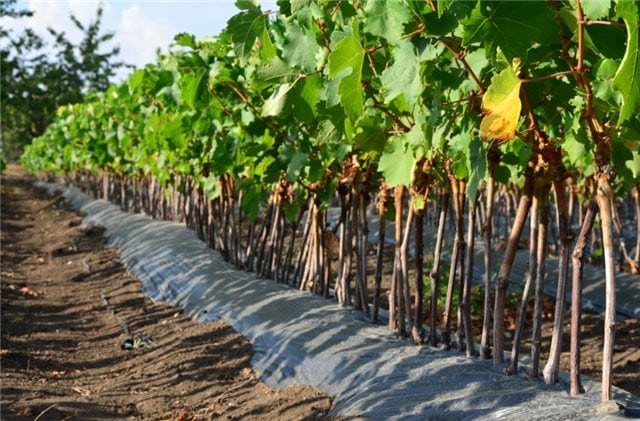
In addition to a seedling, you can choose a cutting and graft it to another medium or tall grape variety.
Care
The main stages of caring for newly planted grapes are periodic loosening of the soil, watering - if necessary, timely feeding and pruning, on which the yield depends.
Top dressing
The procedure is carried out in the spring, when the temperature on the street is over 16 ° C. In a 10-liter bucket of water, 20 grams of superphosphates, 10 grams of ammonium nitrate and 5 grams of potassium salt are diluted. After the formation of the ovary, a second feeding is done: 30 grams of a mixture of potassium (1 part) and phosphorus (2 parts) are added to a bucket of water. To stimulate the ripening of berries at the end of summer, water the bush with superphosphates (50 grams) and potassium sulfate (25 grams).

Pruning
In the spring, there is active juice production, so Victoria grapes are pruned in the fall. They cut off all the excess that has grown over the summer. The normal load on the bush is 25-30 eyes. Some gardeners prefer to leave 2-3 eyes instead of 5-8.
Strengths and weaknesses of the variety
Victoria attracts gardeners due to:
- big harvest;
- simultaneous ripening of all berries on the brush;
- disease resistance;
- ability to withstand frosts down to -27 ° С;
- quick acclimatization in a new place.
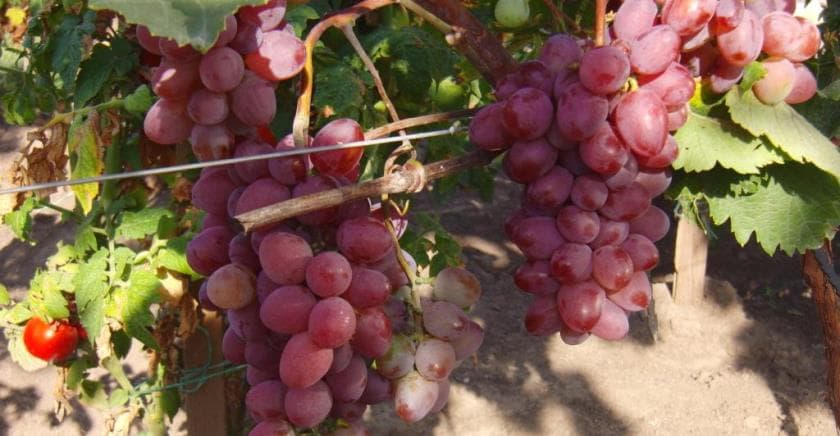
The main disadvantages include:
- crushing fruits with poor-quality pruning and increasing the load on the bush;
- attractiveness to wasps - if the crop is not protected, it will quickly be eaten;
- cracking of the skin at the time of ripening in violation of the water regime. From abundant, but rare watering or in dry weather and short-term rains, the peel easily bursts.
Attention! When laying grapes, you need to remember about the predominance of female-type flowers, and select other pollinating varieties.
Diseases and pests
Among the pests of this variety, special attention should be paid to wasps and grape mites. Wasps are attracted to juicy and sweet berries. With improper watering, picking ripe berries or a low arrangement of bunches, grapes crack, releasing juice. Wasps flock to this juice. Not a single grape is insured against the tick, and they fight with it with special means before the bunches begin to ripen.
On the scale of resistance to diseases, Victoria received a score of 2.3 points, which is quite good. Sometimes this variety is exposed to powdery mildew, chlorosis, white and gray rot, black spot. All these diseases are fought with special drugs, preventive treatment is carried out in the fall.
